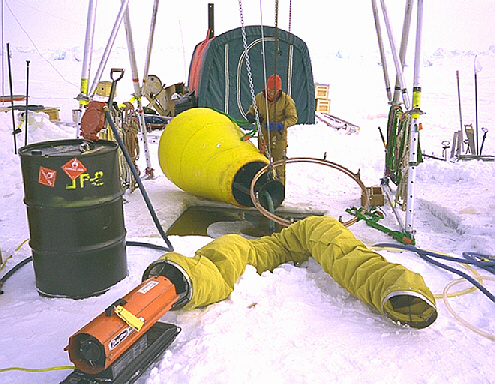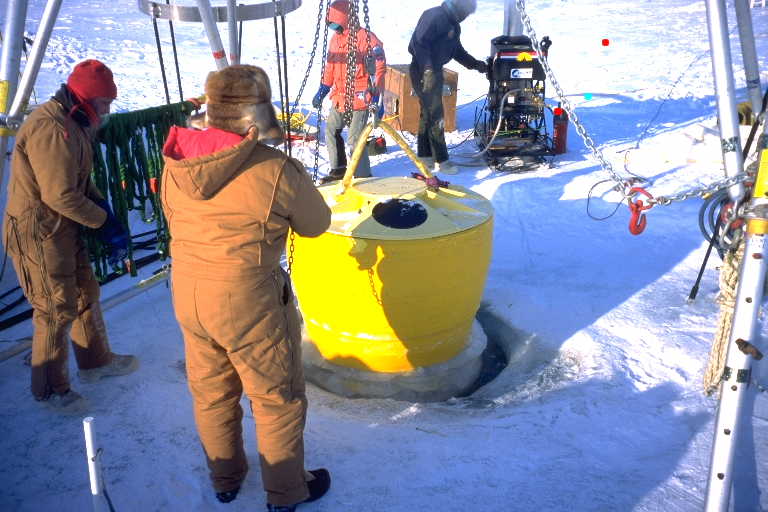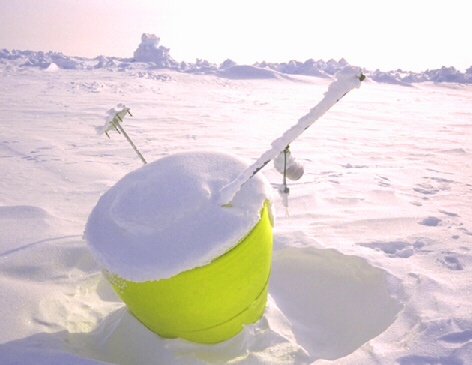Scientific and Technical Objectives
The long-term scientific objective of this research program is to clarify the global role of the sea ice that moves through the Arctic Basin and overflows into the northern Atlantic Ocean by depicting the physical, energetic, and biogeochemical characteristics of the ice, ocean, and surface atmosphere; particularly in the southern Transpolar Drift where the melting process is more significant than new ice formation. This information will improve our understanding of the environmental evolution of the Northern Hemisphere and, by comparison, clarify the global impact of sea ice in the Southern Ocean. The results will aid in assessing planetary environmental problems of today. Scientific observation of sea ice provides us with the first signs of long-range climatic change caused by anthropogenetic forcing, such as the greenhouse effect and the reduction of riverine discharge in the Arctic Basin. In addition, understanding those oceanic processes which produce the highly characteristic biogenic particle flux in the Greenland Sea will improve our knowledge of the global carbon cycle and further the sensible utilization of oceanic food stocks in the northern Atlantic Ocean.
The functional objective of a Polar automated ice-ocean research station is to provide the opportunity to understand the short (hourly and daily), seasonal and inter-annual rates of change in sea-ice and their relationship to local and regional meteorology, upper ocean physics, primary production and, finally, to the process and the rate of biogeochemical cycles in the Polar ocean. In order to be useful to all disciplines of the international scientific community, the gathered data needs to be transmitted in real time.
Consequently, we undertook specific tasks to accomplish the development of such stations and these include the choice, development, and/or implementation of:
- Appropriate air, in-ice and underwater sensors to fulfill the scientific objectives.
- Electronic networking between sensors and satellite transmitters which are energy efficient and reliable under cryogenic conditions.
- An extremely rugged buoy and suspension system which is able to withstand the pressure of ice and low temperature, and has the ability to survive when drifting in a mixed-ice zone or the open sea.
- Technology to deploy such a station at a remote location in the ice- covered Polar ocean.
- A long-term energy supply which can sustain all of the above in the extreme low Arctic temperatures.
- Comprehensive software to access and to monitor the flow of satellite data from one or many distributed automated stations.
The Ice-Ocean Environmental Buoy is the accomplishment of these goals.


